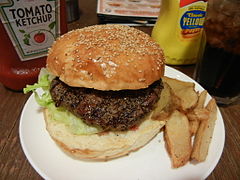 Of course one full-proof method of weight loss is to stop eating crap. But being slim is not proof of optimal health and carrying excess weight around raises your likelihood of disease.
Of course one full-proof method of weight loss is to stop eating crap. But being slim is not proof of optimal health and carrying excess weight around raises your likelihood of disease.
As we preach in our book, movement is a crucial part of long-term health and certainly in calorie burning. Physical movement obviously requires more consumed energy than sitting or reclining. But how much do you need?
There’s a timely article written by Dr. Mercola in Peak Fitness today on the subject.
Sitting burns about 20 calories per 15 minutes, regardless of what your activity is.
Standing up burns about 22 calories per 15 minutes or an additional eight to nine calories more per hour compared to sitting down.
Walking burns three times more calories than sitting or standing, with an hour of walking resulting in an additional 130 calories being burned each day.
Movement has other important health benefits, such as:
Within 90 seconds of standing up, the muscular and cellular systems that process blood sugar, triglycerides, and cholesterol — which are mediated by insulin — are activated. All of these molecular effects are triggered by carrying your own bodyweight.
These cellular mechanisms are also responsible for pushing fuel into your cells and, if done regularly, will radically decrease your risk of diabetes.
Here’s what it takes to burn off your bad diet choices:
To “work off” a single McDonald’s Big Mac, men would have to do more than 40 minutes of cardio; women would have to go a bit longer, just over 50 minutes. If you had a large French fries with that, tack on another 40 minutes of cardio for men and 48 minutes for women.
If you had a can of soda, add yet another 12 to 14 minutes of cardio for men and women respectively. So to “neutralize” the calories in this one meal, which is a common combo, would require at least 1 1/2 hours of moderate to intense exercise.
Bottom line is to eat real food, and get active, so buy whole, ideally organic, foods and cook from scratch. First of all, this will automatically reduce your added sugar consumption, which is the root cause of insulin resistance and weight gain.
Reduce net carbs to 50 grams a day or less and restrict protein to 1 gram per kilogram of lean body mass. The remaining calories would come from high-quality fat sources like avocados, butter, coconut oil, macadamia and pecans.
Consider intermittent fasting if you’re still struggling with excess weight after you’ve cleaned up your diet, you may want to reconsider the timing of your meals. Intermittent fasting can be very effective for helping your body shift from sugar- to fat-burning mode.
Lastly and most importantly, vigorous physical activity. This includes getting up more during your day or walking outside or on a treadmill. Ideally, aim for 7,000 to 10,000 steps a day (invest in a fitness tracker). Later you can add on a more regimented workout routine, which will really help maximize all the other healthy lifestyle changes you’ve implemented. But for general health and longevity, staying active throughout each day and avoiding sitting takes precedence.
Participate in progressive resistance training. Muscle burns fat at any age. The more lean body mass you have, the higher your resting metabolic rate. Ideal is three total body workouts per week using compound movements: one pushing movement, one pulling movement, and other “big” lower body exercises. 3 sets of each movement, 6-10 reps with perfect form and to failure, is enough.

Recent Comments